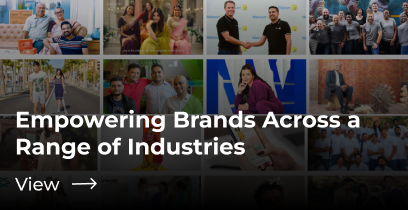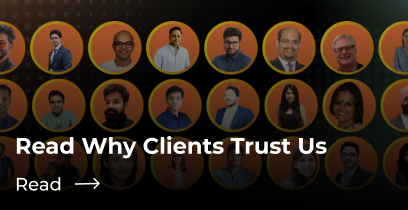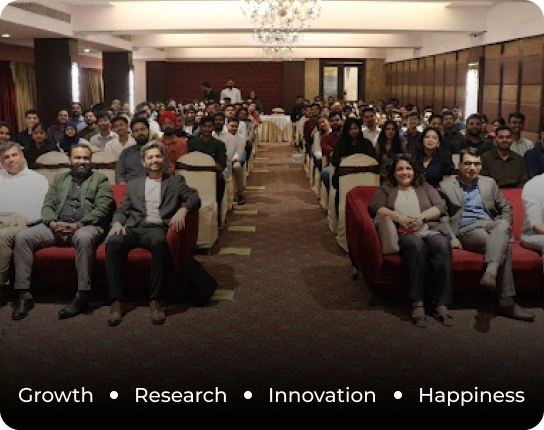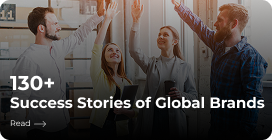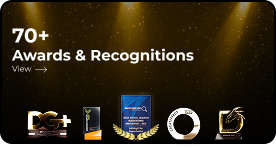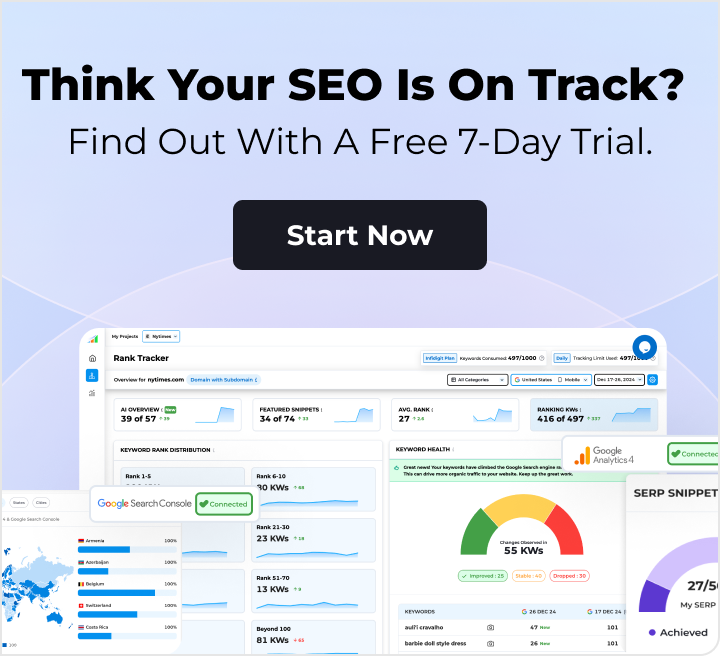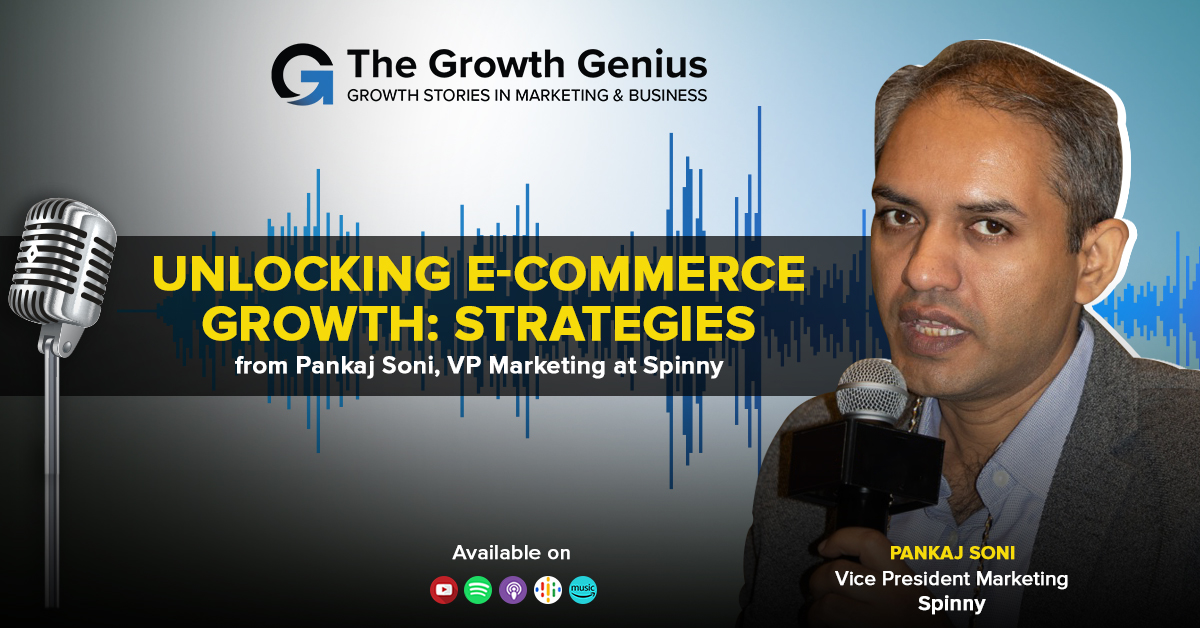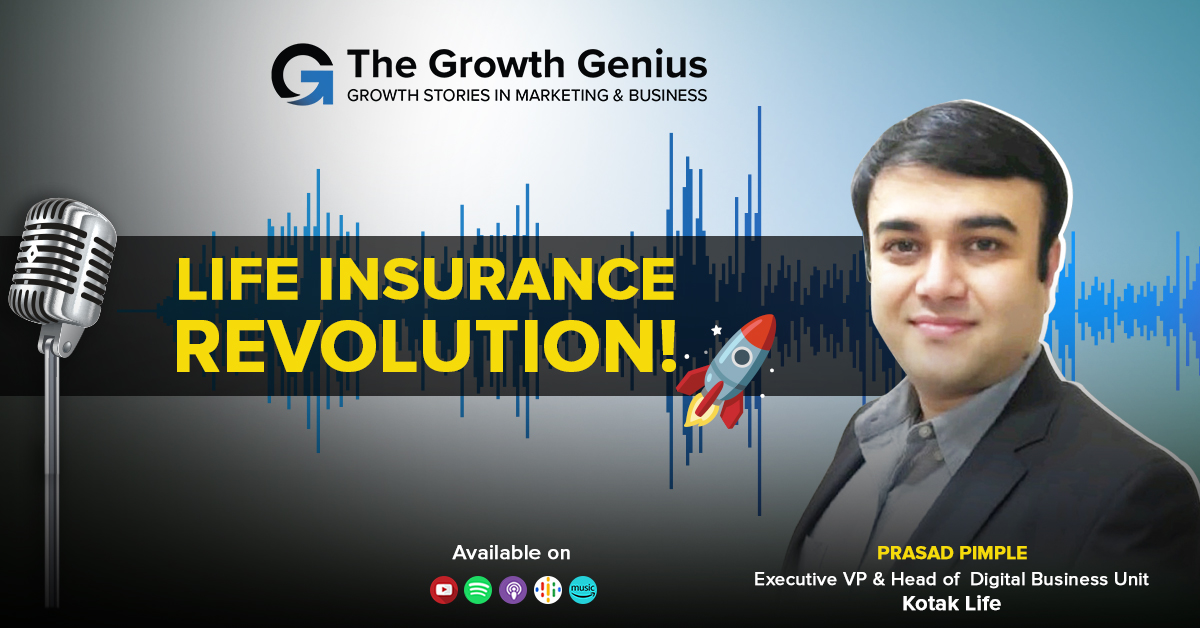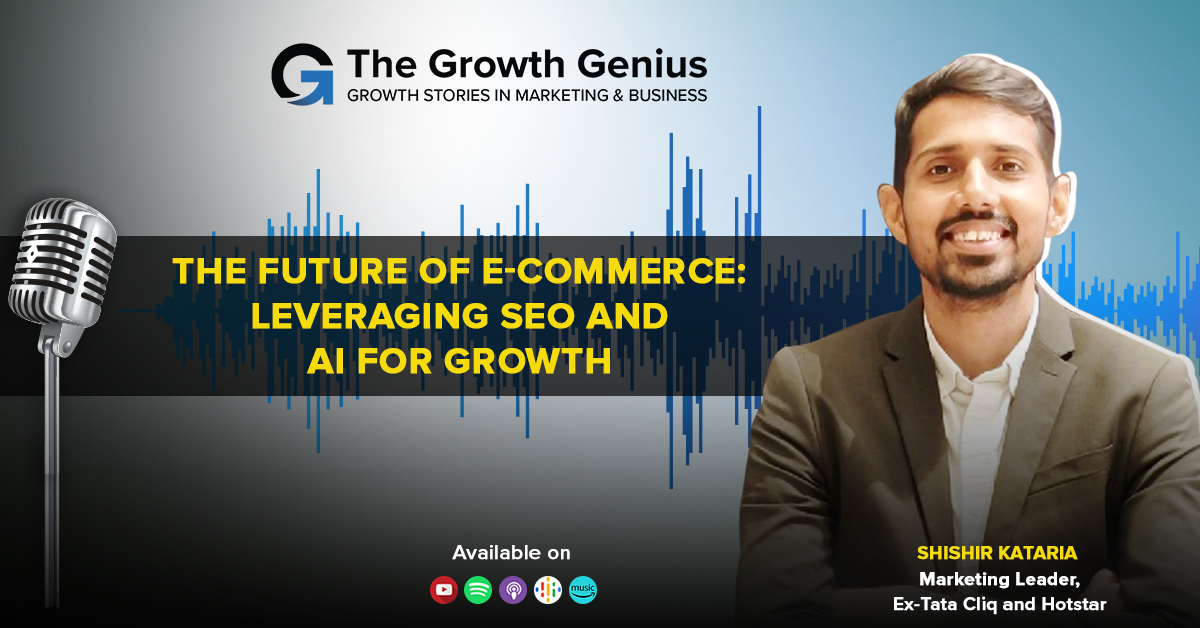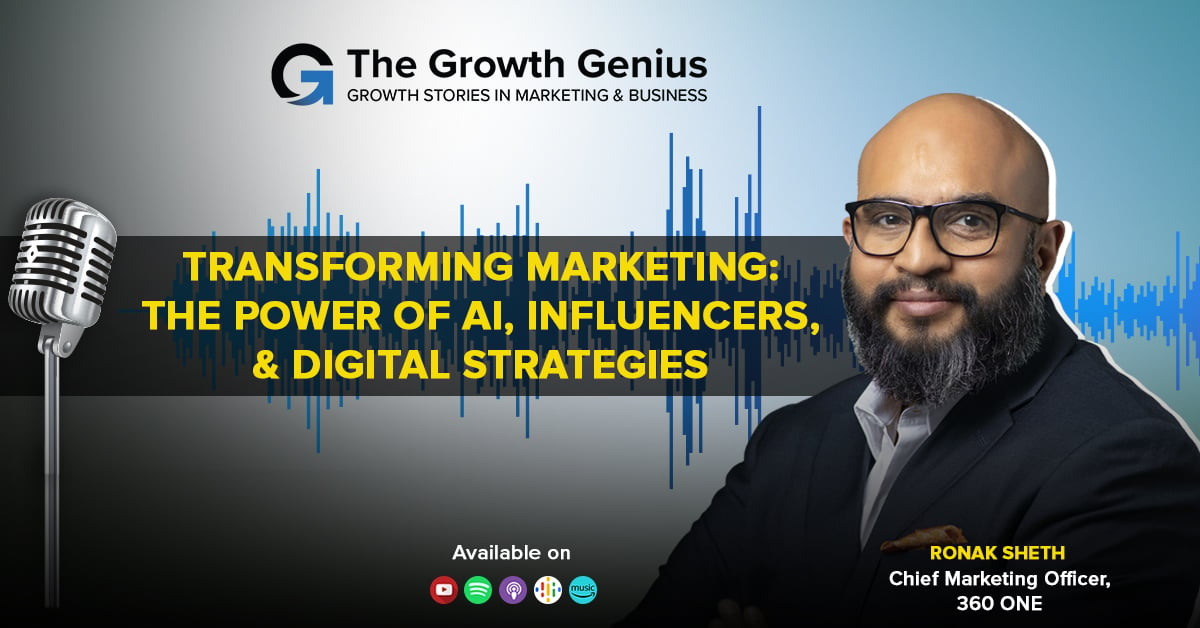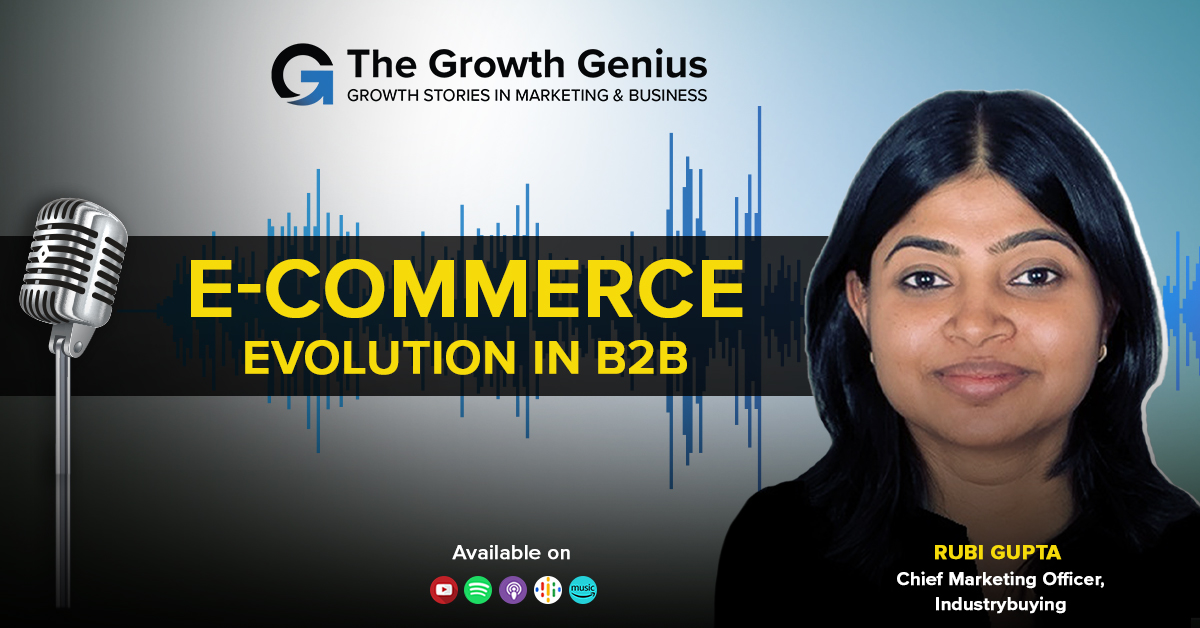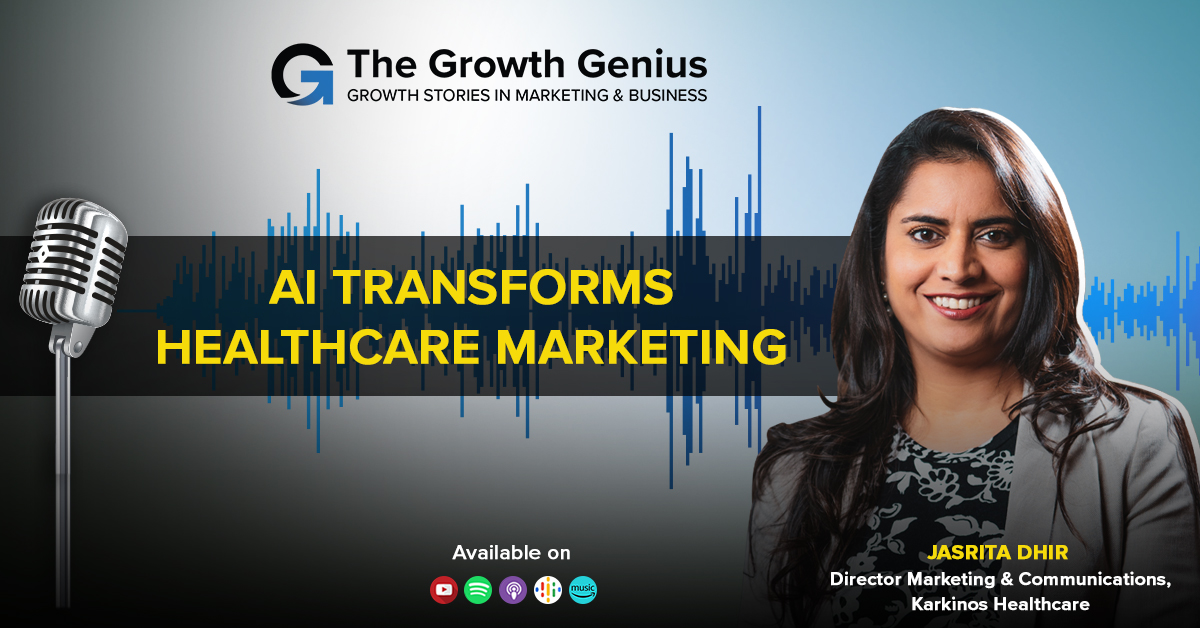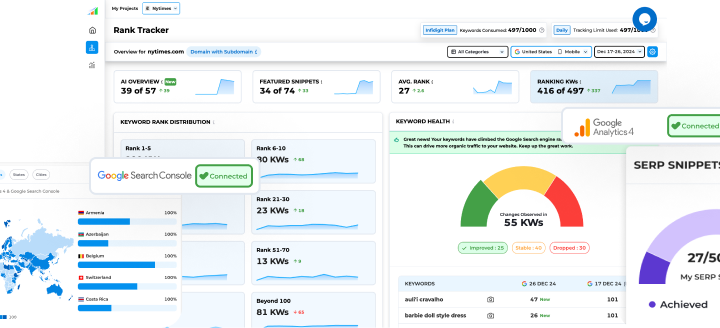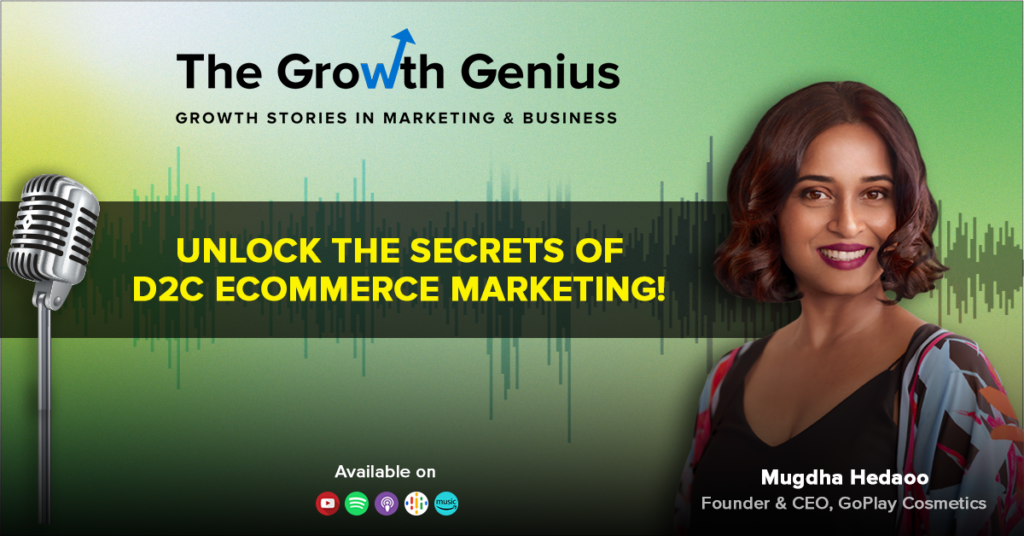|
Getting your Trinity Audio player ready...
|
Listen on your Podcast app
Summary
In this podcast episode, Mugdha Hedaoo, a marketing strategy expert, shares valuable insights on effective marketing strategies. She emphasizes the importance of understanding the target audience and their needs to create a successful marketing campaign. Mugdha highlights the significance of data analysis and research in developing a strong marketing strategy. She also discusses the role of content marketing and the power of storytelling in engaging customers. Mugdha emphasizes the need for continuous learning and adaptation in the ever-evolving field of marketing. Overall, this podcast provides valuable advice and practical tips for marketers looking to enhance their marketing strategies and drive business growth.
Key Take Aways
- The importance of understanding the target audience: The blog emphasizes the need for digital marketers to thoroughly understand their target audience in order to create effective marketing strategies.
- The significance of data analysis: It highlights the importance of analyzing data to gain insights into consumer behavior and preferences, which can then be used to optimize marketing campaigns.
- The role of content marketing: The blog emphasizes the power of content marketing in engaging and attracting customers, and suggests that digital marketers should focus on creating high-quality and relevant content.
- The need for a multi-channel approach: It suggests that digital marketers should utilize multiple channels, such as social media, email marketing, and SEO, to reach a wider audience and maximize their marketing efforts.
- The importance of personalization: The blog emphasizes the need for digital marketers to personalize their marketing messages and offers to cater to the individual needs and preferences of their target audience.
- The significance of user experience: It highlights the importance of providing a seamless and user-friendly experience across all digital platforms to enhance customer satisfaction and drive conversions.
- The role of automation: The blog suggests that digital marketers should leverage automation tools and technologies to streamline their marketing processes and improve efficiency.
- The need for continuous learning and adaptation: It emphasizes that digital marketers should stay updated with the latest trends and technologies in the industry and be willing to adapt their strategies accordingly to stay ahead of the competition.
Read Transcript
Mugdha Hedaoo:- Get out of your comfort zone. It’s easy to make posters on Canva, but get out of your comfort zone. Get in front of the camera and start showing your face to people. Start talking to people. If you don’t let a kid fail, he will never learn what it is like to fail and what the learnings can be from that failure, because second-hand learning will never teach you the same thing as first-hand learning. And I think the same thing holds true for your business. The customer is king. I mean, no matter what you guys say or what everybody says, I think the customer is the king. If your customer is not happy, you’re not going to get anywhere.
Shelly Singh:- Hello and welcome to The Growth Genius series brought to you by DMA Asia and Infidigit. My name is Shelly, and I’m the Country Director, Americas, at Infidigit. I’m also the Founder and Director of DMA Asia. In this Growth Genius series, the world’s best marketers and business leaders are interviewed about the brands they have worked on, their successful campaign strategies, how they got noticed by their customers, and how they delivered better customer experiences to drive growth.
Today, our guest speaker is Mugdha Hedaoo, the Founder and CEO of GoPlay Cosmetics. With a career spanning across b2b, SaaS, and direct-to-consumer e-commerce businesses, she has the privilege of working with high-performance marketing teams in an agile, data-driven environment to bring products to market globally. Having worked with MNCs and startups alike at the grassroots level, she has developed a unique perspective on building strong data-centered go-to-market strategies to align with product roadmaps and the overall brand vision. Mugdha is a mother of two, an engineer by education, a marketer by profession, and an artist by passion. A very warm welcome, Mugdha.
Mugdha:- Thank you, Shelly. It’s wonderful to be here on The Growth Genius with you. Thank you for having me.
Shelly:- Great! So you have been an engineer and a marketer, and now you are bootstrapping your own beauty startup. Tell us about the shifts in your career path.
Mugdha:- Right, I mean, it’s been a very roller coaster of a journey for me. I started. I’m an engineer from IIT Bombay. I graduated in 2005. So the world was very different back then. I don’t think I would have anticipated this sort of career journey, but when I started off in a law firm, again very atypical for an engineer, I was in their IP arm. So I used to draft patents for really big MNCs—Motorola, IBM, et cetera—as their outsourced IP arm. And from there, I went on to become a strategic partner manager with Directi, which is one of the biggest web solutions companies in India now, and I was with them for five years. Through that time, I actually had various different positions and roles. I went on to manage about 80 reports by the end of my tenure there. Most of that was me handling my clients in the US. I was exposed to the entire domain name industry at that point in time. It was brilliant.
And then there was a life-changing sort of event in my life where I had my first child, and at the same time we moved to Singapore. So I moved to Singapore with my husband. I was a trailing wife, so the first two years in Singapore were really, really bad for me, to be honest. Like, getting a job here was not easy. Having come from a background like that, I assumed that it would be easy to get a job in Singapore, but it was not. So for the first two years, I was essentially just sulking, sending a lot of applications every single day, but what happened was that I got into art at that point in time. I’ve always been a closet artist, so I got into art at that point in time. I tried to sell my art. It was absolutely out of my comfort zone—just an entire sort of cold sale of my art to random people. It did not work. I did not end up selling even one piece of art. But it was very humbling as an experience, I think. And then I actually joined a digital marketing agency. So I joined Gozoop; it’s an Indian digital marketing agency, and we were handling the office in Singapore, essentially getting clients here and then sending work back to India. So that was again brilliant for me because I got to network with a lot of marketing geniuses in Singapore, and that sort of opened up a completely new world for me.
I had not been in the marketing world before that. Yes, there are a lot of client-facing problems, a lot of people’s problems, but not particularly at a large scale like marketing. So it was a very interesting time for me, and I think I did quite well with that job. And then I joined Cialfo, which is a client-problem-solving company. When I joined, it was pretty small; we were just a 10-person company, and now they are, I think, about 100 people. But I joined them as the head of marketing at that point in time. We did a few pivots as well while I was there. That was my first startup experience. Brilliant. I loved the hustle. I loved going to work every day, not knowing what was on the table for me, and just tackling new problems every single day in marketing. It was absolutely thrilling.
During my time, I went from marketing our offline admissions consulting product to, after a year, marketing our SaaS product in the US to our independent counselors and universities. Again, a completely different market. I used to market to parents earlier; now I’m marketing to universities. Completely different product, and lots of action is happening. We work very closely with the product team, and we also work very closely with the customer care team. Just lots of hustle. I loved it, but I was not thrilled about the industry itself. And I had my second child as well. And then I realized that, again, I wanted some flexibility. Being in that startup was time-consuming; it was not easy. I didn’t even have a proper maternity leave. So essentially, what I did was quit and take some time off to be with my second child. But two months in, I realized that that’s not for me as well, and I can’t be a stay-at-home mom. And I started introspecting and figuring out what was the best solution because I wanted to spend time with my kids but also wanted to do something on my own. But this time I did not want to do just something; I wanted to really do something that I believed in.
Shelly:- Meaningful.
Mugdha: Yes, I did the whole Ikigai sort of exploration and introspection for myself, where I was thinking about what excites me the most. And that happened to be a marriage of engineering and art. And the reason for sustainability for me was that after I had kids, I just generally started making different lifestyle choices. So you’re spending less on things you don’t need, you’re saving more, you’re buying from brands that don’t have a huge environmental impact, you’re buying green things, et cetera. So, just that generally puts me on the track of a more sustainable lifestyle. So I wanted to do something in that space.
Fast forward three years. I built GoPlay Cosmetics. GoPlay Cosmetics is essentially that. It’s a marriage of engineering, art, and sustainability where you, as a user, can create whatever colors you want in a reusable jar, so you can just wipe it up and then keep creating it again.
Shelly: Wow, that’s interesting.
Mugdha:- Yeah, so now you don’t have to go to a Sephora, and you don’t have to buy like 20 different colors. You can just create it whenever you need it in small quantities. So there’s no waste as well. So I started GoPlay with my first lipstick kit. It’s called a Lipskit. And now we are looking at expanding into other verticals as well. So yeah, that’s where I am.
Shelly:-That’s a very interesting career path you have.
Mugdha:-Yes!
Shelly:-You have a very novel product and a new brand in a very crowded market. Surely getting your brand out on a tight budget wouldn’t have been easy for you. So what were some of the challenges you faced while formulating and executing your go-to-market strategy?
Mugdha:-Yes, it is definitely a very crowded market. When I was entering cosmetics, I was very conscious of the fact that I’d be pegged against the biggies like L’Oréal, Estee Lauder, et cetera. So I knew I wanted to, and I was bootstrapped. I am still bootstrapped. I don’t have investors as such. Of course, I have some angel investors here and there, but I don’t have the big budget that L’Oréal has. So I knew that I needed to do something very, very different where I wouldn’t have to spend as much on marketing. But it was more organic, and people were compelled to talk about it themselves without any nudges from me as a brand. So that is actually one of the reasons why I thought that innovation in the product itself would be a great marketing strategy. If you have something absolutely new that people have never used or seen before, that already becomes the talk of the town. So that was one of the reasons, and a marketing strategy in itself, why we created a very different product. It was not just another lipstick line; it was not just another product where you just see it in those regular dispensers and apply it, because that takes a lot of marketing genius, I think, in terms of actually getting your word out there, content marketing, et cetera. For me, I knew I did not have those resources, so I let my product speak for itself.
So initially, the challenges were more about how I had built this product; I knew that it was going to speak for itself, but how do I do it on such a shoestring budget? Like, where do I start? I think my start was the most difficult, and I think for any entrepreneur, the day you start and you launch, I think that’s the most difficult phase. Once you start, you’re in it, right? Then you can’t leave it. So then you improvise on the go, but just click that button, the go button, and just say, Now I’ve launched. I think that was the most difficult phase for me. But yes, initially, what I did was, of course, do a lot of market studies. I went absolutely out of my comfort zone. I went out and spoke to 50 random women. I found them on Facebook. I told them in one of these Facebook groups. I said, “I want to treat you guys to coffee. Come and talk to me. And I just have this set of 20 questions that I will ask you.” This is my way of just gathering that data, right, and gathering that first sort of email list as well, where I can just get them onto my social media and have them comment, et cetera. But in the first 50 people that I gathered, I got a lot of data in terms of marketing and messaging that would work with people. I used all of that, and I just put a launch date on it. I said, On July 25, 2019 I’m launching, and I put it on my social media. Now, there was no going back. Now I had to launch, whether I had a product or not.
Thankfully, everything fell into place. Within like two months, everything fell into place, and I had my first 3D-printed product available. So the first products were 3D printed. They were very expensive to make. I did not even break even on any of those. But I knew that this was a marketing study for me and wondered whether it was even worth taking the next step. So it was absolutely worth it. I sold 300 in the first three months, purely on social media. At that time, Instagram was big, not TikTok. So I used to keep posting on Instagram, Facebook, and, of course, cold outreach. I also stocked a few places in Singapore. So the first 300 were 3D printed. And after that, I think in terms of challenges, obviously, it was a product that I had already applied for a patent for. So I knew that while I had applied for a patent, nobody could actually just take it and copy it. But one of the challenges was also, How do I? because I was manufacturing in China, so all the different components of the product were manufactured in China. In terms of manufacturing, the biggest challenge for me was that I didn’t want anybody to just rip it off and create their own product because the need was there in the market. I knew there was a need for such a product. People are moving towards more DIY, more at-home care, so I knew there was a need, and I didn’t want anybody to rip it off. So strategically, I just placed my supplier so that nobody knows what the final product is. It’s all made up of bits and pieces. It comes to Singapore, and we assemble it here by hand.
So at least initially, that is what I needed to do to safeguard myself from copycats. In terms of marketing, Facebook ads were extremely expensive for me when I started off because, again, like you said, this industry is so crowded and saturated that everybody is bidding on the same audiences on Facebook. Everyone is bidding on the same keywords on Google. How do you stand out? So I had to literally figure out which keywords were trending. How do I ride on those hashtags and keywords? How do I make content that is more relevant to those keywords? How do I find my audience? So eventually I realized my audience is actually a lot more diverse than your plain makeup cover audience. So I realized that my audience also includes people who love art. I realized that it works for people who do a lot of home DIY. So this is again a lot of experimentation, right? When you work with Facebook, you experiment a lot with different audiences. You realize what kind of interests these people have and where my product can fit in. So this was essentially my go-to market strategy—figuring out what sort of target market it is, first of all. And then, eventually, after a lot of experimentation, I realized my audience looked like me. It is exactly me. And I feel like any entrepreneur who’s building a product would, and I think this is a great takeaway for a lot of people. You will expect to try to figure out how your audience looks, but if you are building a product, eventually you will realize that the audience looks exactly like you. I love to DIY. I love makeup, I love art, and I love sustainability. And my audience is exactly like me. Of course, that’s my sort of early adopter market. After that, there are your makeup lovers. There is your usual sort of younger generation that loves to experiment and follow influencers. But my early adopter market was that. And then it was easy for me to find people like me on Facebook to target. So I think there was a lot of that.
And of course, it was also about location. What I realized very early on when I started in Singapore and started selling it there was that the audience in Singapore was not conducive to a new product or brand. In Singapore, what I realized was that there were more people who were either drawn to products that were value products, like very cheap ones, or they were getting flash deals, et cetera, because of the whole Lazada and Shopee marketplace influence here. But also, there was another sector that was very into luxury goods, so they needed their brand names out there. And I felt like the middle ground was not conducive enough to just go and try. So then we experimented in the US. We set aside a budget for experimenting in the US. And we realized that our CAC, or customer acquisition costs, for the US were much lower. We were spending a lot less on customer acquisition. We were spending a lot less on awareness. Our reach was higher, and CPM was much lower there. So this is with experimentation, with small blocks of experimentation that we were doing. And I think Facebook was amazing as a tool for us to experiment at that point in time.
We realized that the US was the market for us. We realized that US consumers are more open to trying new products and new brands, and they are also obviously thinking more about sustainable products. You know, the trend in the industry is that people are moving from luxury to more boutique, bespoke products. That shift has already started happening, and I think the US is championing that shift as well. And I know that that will happen somewhere down the line in Southeast Asia as well. But I didn’t think that the time was right.
Shelly: The trend-setters are right. The US has always been a trendsetter in adopting new things.
Mugdha:- Exactly. So I think, yes, there were challenges in terms of when I started off in Singapore. There were a lot of hiccups. I was like, Why am I spending more than I am making? I was like, Is it even sustainable? But then you keep learning from it and figure out what your competitor is doing. Of course, you have to keep a very close watch on what L’Oréal and Estee Lauder are doing for at least my particular industry. And you figure out from there what they’re spending more money on. You figure out if this is working and then use it for yourself in smaller ways, but try to adapt to what they are doing. I think I realized that the US was the market for us within the first six months of the business. And I think that was sort of game-changing for us. And I think we are where we are because of the decisions that we made at that point in time.
Shelly:- Great. So in d2c e-commerce marketing, what are your three critical pillars that define success for you?
Mugdha:- So I think in d2c, right, direct-to-consumer e-commerce, where you don’t have… So we are not present as such in stores, so you can’t try our product. And that is true for most d2c e-commerce products because you’re banking on people coming to your website; you’re banking on giving them a full, as good as you can, experience of your products online and expecting them to put their credit card on your website. That’s a lot to expect from people, right? If they can’t touch and feel a product, and you’re talking about CPG products, where you’re actually going to put it on your face and use it as personal care, et cetera, You’re expecting them to give their credit card away on a product that they haven’t felt. So definitely, there are a lot of challenges. But of course, I think one thing that went in our favor, in the favor of e-commerce, was COVID. I think COVID was a full catalyst in moving consumers online and having that major shift in behavior overnight. What we expected to happen in five years happened pretty much in two months. So that was in our favor.
Now, having said that, people are coming to your website, but how do you get them to convert? As a d2c e-commerce business, I think it’s very important to have your three pillars. Like you asked, my three pillars for me would be how you present your brand. I think brandaiitical. itical.itical? The bran The brand is not just the visuals. Brand is what you stand for. Brand is how you talk to people, wh andt your voice is. I think all of these, ho show you take a stand on certain social issues. I think all of this is branding. So this is where the first sort of connection with audiences happens, where an audience will feel like, hey,Heyey connect with you, yo; understand them. So that’s branding. I think it’s very essential in terms of branding for d2 e-commerce, where they trust you to have that authority.
I think the second is a great product, for sure. If your product is not great on e-commerce, people are not going to come back to you, right? And of course, being very vulnerable about it as well. If your product is not good, it’s not good, but you need to keep your audience engaged and tell them, “Hey, this is the thing that we found in our last release. We’ve now worked on it, and maybe this is something that we’ve worked on, and this is a better product that we’re bringing to you.” But being absolutely upfront about the fact that you are building the product with feedback from these people, especially for a new startup, is very important. Maybe it’s the same thing for an established d2c brand, but for a new product that’s coming to market, it’s very important to be vulnerable and tell them that we are humans as well. We are taking your feedback and building a better product for you.
So I think branding, where they believe in your voice, having a great product or a product that they believe that you’re building with them And I think the third is customer service. Right, aftercare is very, very important because once a decision is made, like on e-commerce, if a customer cannot talk to you and tell you, Hey, I don’t like this, or this did not arrive to me at this time, what can you do about it? I think it’s very important to have your customer care in place as well, right? This is as far as, of course, the brand pillars and business pillars are concerned. If you have these three in place, where you’re very honest about all the mistakes you’re making and where you’re honest about your brand voice, it’s not something that you’ve just put on because the world is trending towards it. It’s something that you totally believe in. And your customer care is on-site, where the customer is king. I mean, no matter what you guys say or what everybody says, I think the customer is the king. If your customer is not happy, you’re not going to get anywhere. So you need to make sure that the customer is putting that effort into talking to you; he’s spending the time and money on you. You better be good to this person; he’s the boss. So, I think customer care is absolutely paramount.
Having said that, in terms of marketing, there are, I think, different pillars where you’re actually getting to this point: how do you get your product in front of people? So in those terms, I think that’s a completely different conversation. But once you’ve got people on your website, I think this is exactly what you need. You need these three things in place to eventually have a successful brand and a successful business.
Shelly:- You so rightly said that humanizing the brand is so important nowadays, and it’s really, really amazing.
So after going through all the steps of launching a new brand, is there anything you think you would have done differently when you first started out?
Mugdha:- That’s a great question. I generally believe that having regrets doesn’t really help at all. So I’m the person who doesn’t have regrets in life because I feel like whatever I’ve done and the place that I am in are because of all of the experiences that I’ve had through life. You wouldn’t be the same person if you didn’t have those experiences. So, same thing for, I think, building a business; you wouldn’t be where you are had you not made those mistakes in the past. I think that is the same fundamental with raising kids as it is with raising a business. I think it’s the same thing, right? If you don’t let a kid fail, he will never learn what it is like to fail and what the learning can be from that failure, because second-hand learning will never teach you the same thing as first-hand learning. And I think the same thing holds true for your business. So in hindsight, of course, I feel like I would have done a few things differently. I invested in TikTok much earlier than I have. Right now, we are really trending on TikTok, and I think that’s something that we should have done a lot earlier, but I wouldn’t have ever known about it at that point in time. I came here because I went through all of the Instagrams, Reels, et cetera, spending so much money and time on content, et cetera. And then finally I realized, Hey, TikTok is just like a gold mine; why didn’t we do this earlier? So, definitely, if you ask me, theoretically, there would be a lot more things I would have changed. Practically, I don’t think I could have changed a lot more things. I think I am where I am because of it.
But for listeners, I think you should just figure out earlier where and who your audience is. I think it’s very, very important to have that customer persona in place. Spend a lot of time talking to your customers, for sure. Pick up the phone and talk to your customers. Ask them what they did in the morning, what coffee they’re drinking, and what movies they watch. I think it’s very important to understand very clearly who your customer is. And that doesn’t mean, like, you need to know who your thousand customers are. Even if you speak to 10 people, you’ll start drawing some commonalities between these personalities, and you can then figure out a lot of things about your business, about the product that you want to build, about the brand voice you want to have, about where these people hang out, and about where you want to market. I think that’s something that I possibly did not do as much in-depth earlier on, which is why I think it took me six months to realize that my audience lies in the US. And they are 25-year-olds who are thinking more sustainably about the world. But it took me six months to reach that. And I think that’s definitely something I would have other people spend time on: talking to your customers and definitely being vulnerable. You don’t have to act like you have it all sorted out. Nobody has it all sorted out. You make things up as you go. So being vulnerable, being very open about your communication with your clients and your customers, and yeah, absolutely knowing what they do on a day-to-day basis, for sure,
Shelly:- Great. So now, getting to more specific questions, it said that content is king, and especially when it comes to consumer brands, you have been working on bootstrap budgets, like you told me. How do you manage to churn out content at speed and compete with the big guns, considering the content appetite is huge, especially in the beauty industry?
Mugdha:- Right. Yeah, the beauty industry is very, very cutthroat that way in terms of content. If you type makeup or in Instagram as a hashtag, you will see like 20,000 influencers just putting out content. Every video has 20 products in it, so as a brand, you get lost in that content. So how do you stand out? So, yeah, it’s not easy, for sure. And I didn’t actually realize how important content was until very recently. I thought putting it up on Instagram, if you say, Oh, we are launching, and those static sort of posts, should do it. I just have to be consistent about it. Every week I put out five posts on Instagram and Facebook, and it should work. It didn’t work. It doesn’t; you just end up spending so much more time creating these graphics and stuff, but that’s not speaking to a consumer, right? It’s not talking at all to a consumer. What a consumer sees is a poster, and they look like, What do I do with this poster? Show me something that excites me and keeps me engaged. And that I realized a lot later in life. And now, looking back, I feel that even if I had been with my ed-tech company earlier, even with the digital agency that I was with earlier, I would have made a lot more different decisions in terms of content. So yeah, it’s not easy to churn out all of the content.
Initially, I used to create my own Canva posts, et cetera, and have posts every day. One piece of content used to go out. There was no engagement for a really long time—very low engagement. Then what we did was, I think, the other thing that we actually did during COVID in 2021, when we realized that the US was the market for us and we were like, How do we break into the US? We don’t have influencers there; we don’t have a product out. We actually weren’t even in production at one point. I had already sold my 300 pieces of 3D printed product, and I was like, How do you enter this huge market where ad costs are through the roof? Just entering and putting your ad on Facebook was not going to cut it for us. We needed faces who were trying our product. We needed money to first make those products so that we could give them to those people. How do we do all of that? So then we realized that there is this audience on Kickstarter and on crowdfunding platforms where they are always interested in trying new products out. So we went on Kickstarter. Kickstarter is typically, traditionally, a very male-dominated sort of platform where you have mostly men who are backing projects that have more to do with gaming, tech gadgets like watches, et cetera. So it’s a very geeky tech gadgets sort of market. And we’re like, We will be so odd sitting there as a beauty product meant for women. But we took the plunge. We were like, We don’t have any. There is no other crowdfunding platform out there specifically for women’s beauty products. So we took our chances. We saw a few past products and projects there that were focused on beauty, and we saw that there was a fair amount of traction on those projects. So we took a chance.
We went on Kickstarter, and I think that was the best decision we ever made. We went on Kickstarter, and we got about 1500 orders from there. We raised over 114,000 Singapore dollars on the project, which gave us enough resources to then go into production. So that’s what a crowdfunding campaign does, right? So you pre-sell your product, people pre-order it, and then you take that money, you go into production, and then you deliver it. So this was a great marketing campaigus,for us I would think. It sort of put us right in the middle of innovation in the US. Even if it was not the women who were buying it, it was their boyfriends and husbands who were buying it.
Shelly:- Influencers.
Mugdha:-Yeah, they were already buying innovative products themselves. So they were buying it for their girlfriends and wives. So we realized that it just happened to be a great place to be for us as an innovative beauty tech brand. So that sort of set the wheel going for us. And we realized again that a lot of influencers bought our products through that Kickstarter campaign. We had no idea who bought it. We just shipped everything out. And then we realized that there’s organically all of this content happening on the internet about us. So I think in January 2022, when we shipped out all of our products, we started a huge surge in content on the internet.
Also, at the same time, L’Oréal launched its own similar product under the YSL brand. It’s called Rouge Sur Mesure. It’s basically a DIY lipstick kit, but it’s priced at $500.
Shelly:- Wow.
Mugdha:-So very expensive—luxury products for sure. And they launched it in January as well, and we launched in January as well. So we just happened, and they had all of this content going on on the internet because they could afford to hire these influences for millions of dollars. So they had all of this content growing, and we had our backers from Kickstarter who then started commenting on all of this content, and they started commenting, Oh, this is for $500; why don’t you check out GoPlay? is selling it for like $70, and there’s a much wider variety of colors that you can get. So we became the underdog. I think it was the right place at the right time for us.
So there was definitely a lot of luck involved for us in this entire game. But I think the best decision for us was going to Kickstarter in the US. So that was a very good decision for us. The content then just organically started flowing because these people started buying more and more. They saw the comments, and they’re like, I can’t afford a $500 YSL product; let me just try the GoPlay Cosmetics at $70 first. So that’s how we got our first sort of audience, our first customers, in. And then they started creating content, and that’s how we went from there. And of course, then that peaks, right? At a certain point, it peaks, and then you see the content stop working after a point. Then you’re like, What do we do now? That’s where the second phase happened for us as far as content is concerned, where we are like, Okay, we are now actively talking to influencers. Come to us, and we will give you packages. Try it out. If you like it, post it. If you don’t like it, don’t post it. It was sort of like that. So we didn’t spend any money. We did not pay any influencers. We just said, Hey, why don’t you try it out? What we had at that point in time was data. We had data regarding our influencers—influencers as in people who had already organically posted that they were getting 50% more views on videos that they were creating about GoPlay Cosmetics than their regular videos. So we used this data to negotiate with our influencers. We said, Hey, I don’t think we need to pay you because you’re already getting 50% more views because of the products that you’re covering. It’s a new product. People are curious about it, right? So I don’t need to pay you because you’re going to get more views on your videos about us. What we’re going to do is send you free products. So that’s how we then get a lot of content because we use that data to back us up and tell us that, hey, we don’t have the budget for it. Just take our product and create content. So that was sort of phase one of influencer marketing for us, where we were not paying people.
Again, that tends to happen once the industry is established, and now they’re like, Okay, now we know what GoPlay cosmetics is about. We know what Lipskit is about. Now we need to start incentivizing people to start doing content for us. Now we are sort of in phase two, where we are now paying people to do our paid promotions. But thankfully, TikTok happened for us. So on TikTok, we just hired a content creator. She churns out content for you. And TikTok works very well organically, at least for now. So you use the right words, you use the right captions, you use the right hooks, and it will just go viral. And that’s what happened to us. We were consistent with our content creator creating those videos for us. And the content then started just like that—it was an avalanche for us. And suddenly we realized that it was working on itself. We don’t really need to push anything at all. So yeah, TikTok, for now, has become our number one sort of place where we sell and our audiences find us. But, yeah, it’s a lot of hustling and hacky ways of doing it. Of course, if luck works in your favour, that’s great!
Shelly:-Luck, hard work and good strategy, I think everything works together. My next question is on omni-channel marketing. So I was reading, and I came across this report by McKenzie that during the pandemic, there was a 33% decline in sales of color cosmetics and a 15% decline in overall retail sales in the beauty category. So after a challenging year of the pandemic, the cosmetic industry is on the rebound now, and the more successful brands have adopted an omni-channel customer experience. So the consumers who are like you also said that consumers who were buying online during the pandemic are coming back to the stores because they’re missing the human connection and the ability to feel, touch, and try on. The cosmetic industry is very important. So, now that you are a pure-play d2c ecommerce brand, what are your thoughts on omni-channel marketing?
Mugdha:-I think it’s very interesting the way the world has shifted from pre-COVID to COVID and now to post-COVID. Very, very interesting. I think there is definitely an inertia of people still spending a lot more online than they are offline. That inertia is still going to take you a little further. It will take some time for that to level out again, but I think overall the habits have changed. People are now buying, and during COVID as well, I think the supply chain logistics were very stretched, but I think a lot of people have come up with innovative models to get products to you instantly, like within seven working days you will get a product from Singapore to the US. So I think that time has also decreased. And all of this happened during COVID, right? Because of the stretch that logistics was feeling, they had to come up with innovative ways to figure out how to streamline their processes as well.
While the consumer is going outside, they’re going into malls and shopping. They also have an option and a reach worldwide, right? So when they go to a shop, of course there is more of that impulse buying happening where they see something and they buy it. But at the back of their heads, they also have all these brands from worldwidthatre they can deliver within seven days, right. Definitely, there are pros and cons to both. But I think omnichannel is the way to go. There are no two ways about it. You go where the audience goes. If the audience stays at home, you stay at home. If the audience goes outside, you go outside with them. There is no way you can say that I’m going to be a pure-play d2c brand, but there is a lot of enablement that has happened in the past three years because of COVID that has helped d2c brands reach their consumers in a faster, cheaper way as well. For instance, right now, if you order from the US, you will get our products in five working days. So I think that in itself would have never happened ten years ago; it was impossible, but today you’re getting it in five working days. So omni-channel is absolutely important for small players like us. It is an expensive game for us to play omni-channel because the consignments that we do or the commissions that we pay in-store will cut through our margins substantially. Having said that, people want to look at and feel products. So having a presence in places where they can see and feel, but they can place an order where it can be delivered to you, I think that’s a brilliant model as well, where they don’t buy it on the spot because you don’t have enough inventory to store in that particular store. So you just display it, let people have fun with it, and then they can place an order online. So this is like a hybrid model. I think that’s working well for a lot of brands as well, where you don’t want to stock everywhere because stocking also cuts into your bottom line quite a bit because you have to produce all of this stock. Then you have to go and ship it to places outside of, like Singapore. Stocking in Singapore is not a problem. But if I were to stock in the US, I would have to estimate how much I needed to produce beforehand. I need to then ship it to the US and stock it in a warehouse. Then the warehouse needs to ship it to other stores everywhere. It’s a lot of resource planning. It’s a lot of money upfront without actually knowing if the audience is buying it or not.
So instead of that, there are these hybrid models that have evolved where you just send a few products, you let people try them, and then they order it online because it’s just five working days that it takes. Or you have a presence in a warehouse in the US. And then you ship it from there. The hybrid model, I think, is definitely one to watch out for. And I think something that can help us as brands manage our inventory better, lower our costs, and get the product to our customers at a much lower cost Like, there’s a reason why L’Oreal charges 500. It’s not because it’s made for 500. It’s because of the excessive costs that it takes to actually make sure that product is in the next store, which is one kilometer away from you. It’s all of those costs that are adding up and making it $500. So if I, as a brand, can cut down those costs and get you a product for much cheaper while having you actually test the product, then why not?
Shelly:- Yeah, that’s interesting. So I think hybrids could be a great model to work for brands like you. The holidays are coming, right? So this is the holiday season, with the cost of logistics and supply chain, like you’re saying, cutting into your margin. So how do you compete with bigger brands as far as discounts and sales are concerned?
Mugdha:- Holiday season is paramount I think for any consumer brand, like you have to capitalize on it. There is no other way, you can’t escape it. How you capitalize on it is completely up to you as a brand. There are things that you can do where you don’t have to essentially give away discounts. You can have so many more strategies. So what we did was, and this is not a holiday campaign, it’s just something that we realized earlier on and we made it a part of our product, a bundle. You know which products are selling the fastest, you know your best sellers, you know your worst sellers. The easiest way to move inventory is to bundle these up and give a really good cost. As an audience, as a consumer, you feel like you’re getting more for your money. At the same time, I’m saving costs on my inventory and stocking, et cetera, on my warehouse and I’m able to get my average order value for consumer hire. So you don’t always have to do discounts because I think the discount mentality doesn’t – it’s not sustainable. And as a brand, if you’re doing that initially when you launch, if you say, oh, we’re doing major discounts in this month of the year, et cetera, then people will wait for that discount, they will not buy for the rest of the year, right, so you don’t want that.
Shelly:- That is very true. That’s very true,
Mugdha:-Yeah, you don’t want to be sucked into that hole at all, right, so you want to steer away from a brand which keeps giving discounts because then you become a brand that people wait for the discount season.
Shelly:- Yeah. And if there is Christmas and then there’s another holiday season coming on, then there’s some other event coming on. So people will keep on waiting for something to come up and then wait for the discount.
Mugdha:- Exactly. I mean, initially, long back when the whole economy was evolving around consumables, I think that time made sense because it was unpredictable when a discount was going to be thrown at you. So people were like, oh, I don’t know when the next discount is coming, let me buy it now. It was not like you were losing customers because of discounts at that point in time. I think today’s discounts have become very predictable. Today you know, there’s an 11-11 happening today, you know, now there is a 9-9-8-8-7-7, everything is happening. The flexibility of discounts has been taken away. So now a consumer knows that I just have to wait five more days for my next discount. Why should I buy it now? So I think it’s a trap that you’re setting yourself up for as a brand if you start falling for these discounts [inaudible] (0:43:09) and stuff. So we steer away from it. We are actually not even on any of these marketplaces Shopee, Lazada, where we don’t participate in any of those flash discounts as well.
But what you do instead in these holiday seasons is package your product such thatthat,because theliday season is mostly gifting season, people are not buying for themselves, they’re buying for somebody else. So you package your product, you market your voice, you change your marketing strategy around making your product more giftable, and you give them a better price than you would normally do in terms of giving it as a bundle. You add on things like gift wrapping, personal notes, et cetera. You can do so much more. You don’t have to fall for the discounts all the time; you just have to change your strategy.
You have to realize why a person is buying this in the first place—who are they buying it for?—and then you market it in that sense, right? I mean, it would be great if I could get a package in my house that is completely wrapped up, has a beautiful note in it personally written, et cetera. If I already have that, why would I go and buy something from a different brand, even if that brand is charging me less? So if I can send this to my receiver or somebody I’m gifting this to. So I think as a brand you need to understand all of this psyche of why people are buying during the holiday season. And I’m sure this holds true for non-essentials. Like essentials, of course, if you’re buying diapers, you’re buying diapers, you’ll purposely buy diapers for yourselves, as in your kids. In terms of gift tables, I think it’s very important to then not fall in the trap of having discounts because especially for a brand like us, we are priced, I think our margins generally are quite low and we don’t have the capacity to play around with discounts as much.
So we do have an internal guideline on how much we can go down. We can’t go below that. For instance, we can’t go below a 20% discount. It’s not sustainable for us. So the maximum discount that we give once a year is 20%. Now it’s for us to innovate on how we can get people onto our website when we’re not doing that 20%. So what can we offer more of? We can offer more in terms of customer service, refunds, packaging, and bundles. But yeah, I think there’s a lot more scope for innovation in that space, and discounts are not the only way. It’s the easiest way, but it’s not the only way.
Shelly:- My next question is on trends. What are the top three local and global marketing trends post-pandemic that you are discovering?
Mugdha:-I think trends are definitely in terms of platforms where people are going and now it’s very clichéd, but I think TikTok is definitely where our audience lies. People are buying more online, they are getting more influenced by people like them, not necessarily influencers. Now, I think people are also more educated in terms of the fact that they know if a certain influencer is covering a product, they know it’s paid for, they know that there’s incentive there, people are already aware of it now, initially that wasn’t the case. Now people are aware that hey, this influencer is doing something on this product. This product is sponsored.
Shelly:- Customers are very smart nowadays. They know that if it’s branded content, they get to know about that.
Mugdha:- Absolutely. And the whole new generation, the Gen Z, or so they call it, loves the fact that you as a brand are like them. The word that you use humanizes the brand. You fail in front of them; you succeed in front of them. You make them a part of the journey as well. You take their feedback and you shout out to the world, Hey, thank you for telling us this feedback. I did not know this. You have to talk to them like a person. So I think humanizing your brand is very, very important. You can’t be like, Oh, I’m standing on a pedestal as an authority, and I tell you what to do. You can’t be that anymore. You have to be part of the crowd. And TikTok lets you be a part of the crowd, because if you see something on TikTok, of course it’s the content that you post, but then you are having these conversations in the comments as well. And then people ask you questions; you reply to them; they’ll say bad things; then you reply to them as well. You don’t have to always highlight the good things about you. You have to show people how you’re handling the bad feedback as well. I think just that fact has helped us connect a lot more with our customers. We’ve had angry customers who we converted into advocates just because of the way we handled that situation.
Shelly:- Customer service is very important as well.
Mugdha:- Very, very important. The way you talk to people is where you have to make them feel important, like they’re heard. Just because they’re spending $30 against, say, $100 that somebody else is spending on your shop doesn’t make their voice lesser. So I think in terms of trends, you have to humanize yourself as a brand. You have to try to get on these platforms. And I think these poster-type posts are not working anymore. Get out of your comfort zone. It’s easy to make posters on Canva, but get out of your comfort zone. Get in front of the camera and start showing your face to people. Start talking to people. If you are not comfortable showing your face, then get somebody else to be your spokesperson and show your face to people. But be a brand. And I’m not talking just about CPG brands, right? I’m talking about boring brand names as well, like insurance. I’m talking about everybody. You need to talk to your audience so they feel like they’re talking to a person and not to a blackboard. Humanizing your brand means getting on these platforms for what they are meant for. Like on TikTok, you can’t just post a slideshow, right? That platform is meant for you to interact with your audience and show your face to them. Be on that platform and be true to what that platform stands for. So be on the platform because that platform talks to a certain audience.
And yeah, I think the third is what I said. The whole thing is agile in terms of your models as well. You can’t just be a pure D2C, and you can’t just be a pure retailer. You have to be somewhere in the middle. So you have to be very agile in that sense. Quickly learn where the world is moving because it’s definitely moving faster than you ever can. Quickly learn and adapt to how the world is moving and be in a place where the audience is and where your customer is. Try to be the first person there. So I think these three things in terms of trends are where I see people moving and brands moving as well.
Shelly:- Well, That’s very practical information that you have given us. This brings us to the last segment. Tell us about one passion you follow and how it helps you elevate your profession.
Mugdha:- Like I said, art is where I find my meditation. I love art. I’ve always loved art. If I wasn’t an engineer, I would have been an artist for sure. Failing artist, but I definitely would have been an artist. That’s one of my hobbies. Now I have consciously started doing it. I’ve started taking on new challenges for myself. Not professionally, but something to do on the side because I feel like this learning mindset that we humans have, after your formal education is over, you stop being in that mindset. You feel like, Oh, now I don’t need to learn anymore. Or you feel like I’m reading articles on Facebook every day; that is enough learning for me. But that’s not true.
You need to take up new activities every now and then because you need to put yourself through that learning curve. So, for instance, a year ago, I took up tennis. I’m not good at sports, but I took it up because I wanted to go through that learning curve myself. I wanted to have a coach who was telling me, Why are you being like this today? You’re not doing this properly. I think that it’s very important to take that feedback from people because it opens you up as a person as well. It is very enriching to have that learning mindset all the time. Very recently, again, I took up sourdough baking. Sourdough baking—if anybody has baked sourdough in this audience before, you would know it’s not an easy hobby to take up. It takes a lot of patience and a lot of failure. It is a lot of getting up the next day, and you’re like, Okay, now I have to work the entire day to bake a good loaf of bread for my family the day after. So you are preparing in advance and looking at conditions. And sourdough baking, looking at the dough. You have to learn to make the dough. There’s no recipe for it. Like you have to learn from the dough. It talks to you. You have to manage it, and you have to see what the weather is like and what the humidity level is like. So it’s like you’re literally sort of fine-tuning a lot of different things at the same time. So that in itself is very good feedback. You learn to learn from different clues around you, and I think just taking up these hobbies helps you continue being in that learning mindset, which I think is very important.
While art keeps me away from all of this. That’s where, if I want to zone out, I zone out with art, but I zone in with all of these different activities, which keeps me away from working professionally. If I want to take some time off from just looking at my website and analytics every day, I do this. But at the same time, it’s honing my learning skills. Yeah, of course, with kids learning every day, every day is, How am I going to be with this kid today? How is the kid going to be with me today? Every day is different. So I think that in itself, being a mother teaches you so much patience. It teaches you things that I don’t think anything else in the world can teach you. So, yeah,
Shelly:- That’s great. That’s really great. So how can our viewers find you and connect with you?
Mugdha:- You can easily find me on LinkedIn, of course. So LinkedIn is where I am as far as networking is concerned. Other than that, just go and write to [email protected] if you want to know anything about the brand. I personally look at every single email. You can find me there as well. Yeah, and shout it out on LinkedIn. I think that’s where I’m at my best.
Shelly:-Well, thank you so much, Mugdha. It was a pleasure to interview you. I wish you all the success for your business.
Mugdha:-Thank you so much, Shelly. It was great speaking with you. I hope I didn’t bore your audience. I hope they did have some takeaways from this and didn’t waste their time here. So, thank you.
Shelly:-Thank you so much. To all our viewers, thanks for listening, and please subscribe to this channel. If you enjoyed this episode and would like to help support this podcast, please share it with your friends, post about it on social media, or leave a rating and review. I’ll see you next time in a new episode with a new speaker. Till then, peace.

Popular Searches
How useful was this post?
0 / 5. 0



